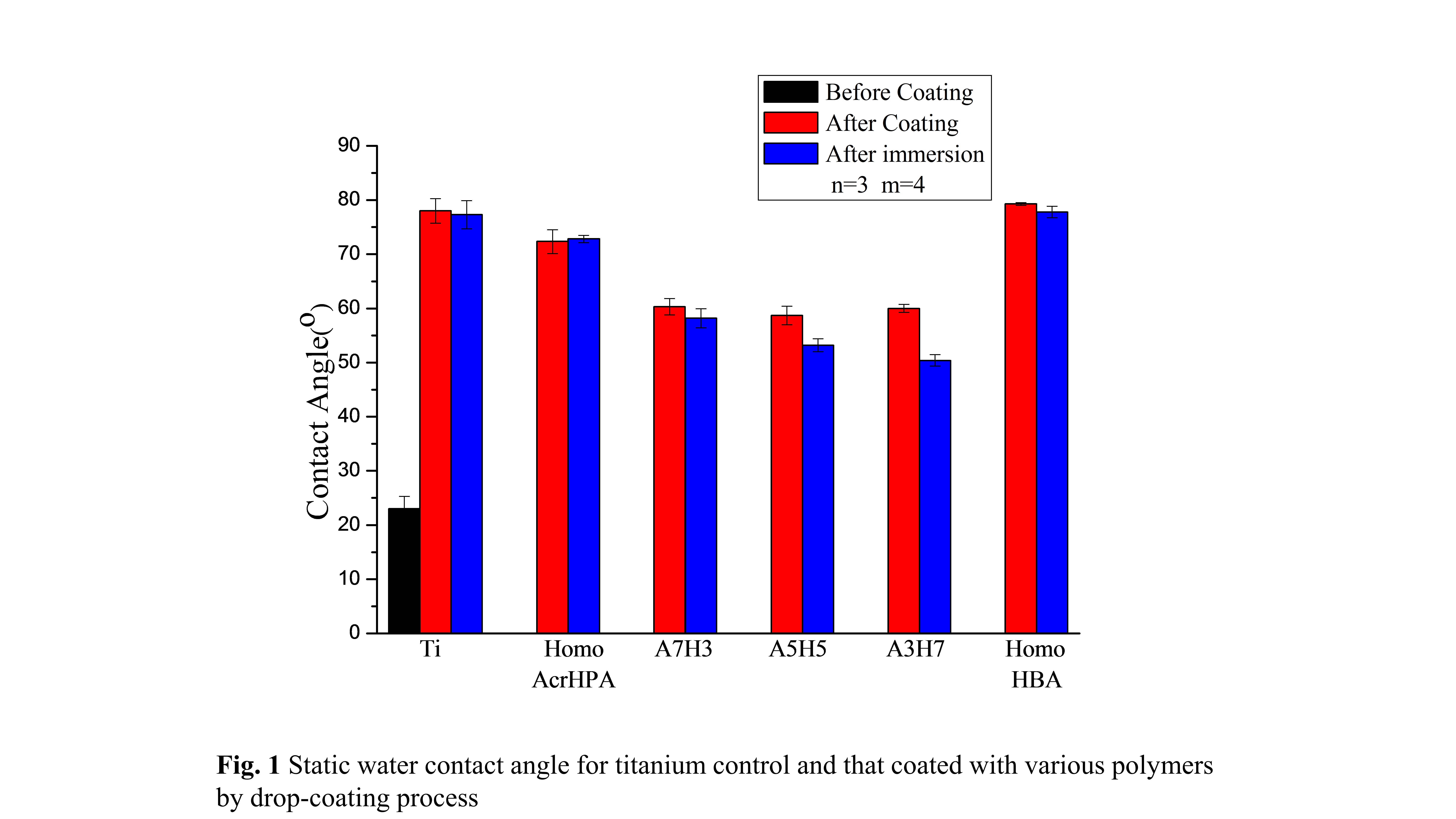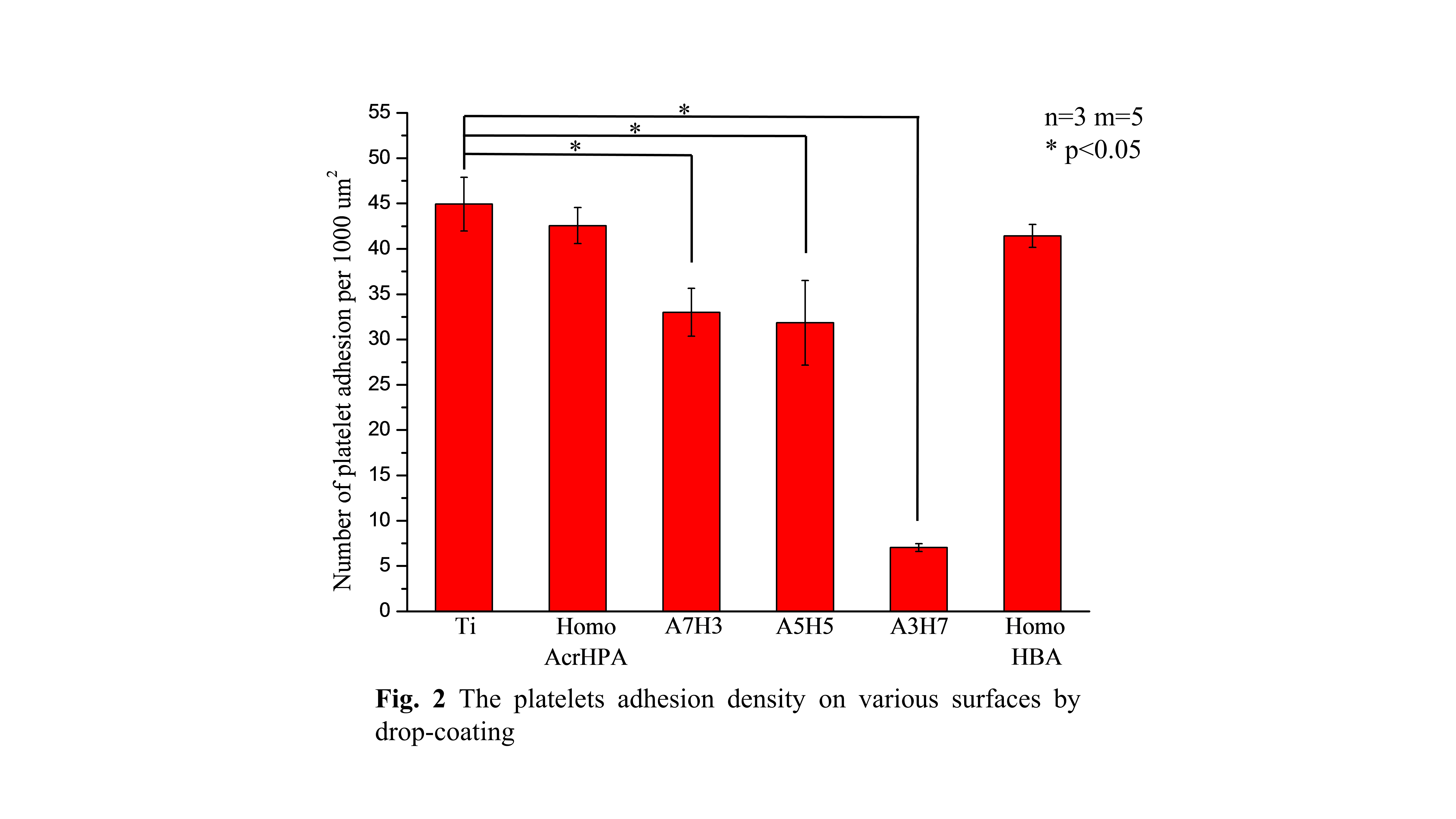Introduction: Amongst the metal recommended for implant applications, titanium-based materials would be the first of choice. However, the long-term interactions between the implanted titanium and blood may lead to the formation of blood clot. In this study, to improve hemocompatibility of titanium, the surface was modified with a layer of novel multi-functional copolymer, which consists of 6-acryloyloxy hexyl phosphonic acid (AcrHPA) and 4-hydroxybutyl acrylate (HBA) as synthesized by traditional free radical copolymerization. The copolymers do not only bind to titanium surface stably with phosphonic acid, but also prevent platelet adhesion effectively with the hydroxyl functionality. These copolymer was expected to suppress platelet adhesion, activation, and aggregation onto titanium substrate for improving its hemocompatibility. Various ratios of HBA were mixed with 6-AcrHPA for copolymerization. The chemical characteristics of these copolymers as well as the surface properties of the Ti substrate modified by these copolymers will be analyzed. In addition, the hemocompatibility of these copolymer-modified Ti substrates will be assayed by in vitro platelet adhesion testing.
Materials and Methods:
Synthesis of poly (AcrHPA-co-HBA) copolymers: The AcrHPA was mixed with HBA at designated ratio to form a total of 0.3 M solution in methanol and degassed by three freeze-pump-thaw cycles. The copolymerizations were initiated by 2 mol% AIBN and reacted at 65 ˚C for designed duration.
Preparation of polymer layer on Ti substrate: 3wt% polymeric methanol solutions were either drop-coated or spun-coated at 400 rpm for 30s onto pretreated titanium. The disks were then heated 145˚C overnight.
Surface characterization and platelet adhesion studies: The polymer layer was characterized by contact angle, SEM, and XPS. The in vitro platelet adhesion experiment was performed as similar to that in our earlier study [1].
Results and Discussion: The contact angle of modified layer prepared by drop-coating was shown in Figure 1. No significant change among the coated copolymers was noted. After immersed in water for 1 day, the surface wettability was increased with HBA content, likely due to the migration of hydroxyl groups towards to the surface. The contact angle of modified layer prepared by spun-coating was similar to that prepared by drop-coating.
Figure 2 indicated that Ti substrate modified by A3H7 showed the least amount of platelets adhered. In addition, the A3H7 surface is also the least platelet activating one.
Conclusion: These results revealed that surface modification with the copolymer containing both phosphonic acid and hydroxyl functionality is an effective method to improve hemocompatibility for Ti.


References:
[1] Shen CH, Lin JC. Langmuir 2011;27:7091-8